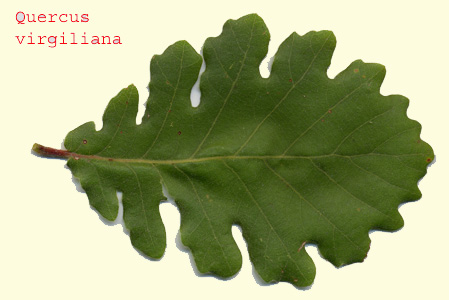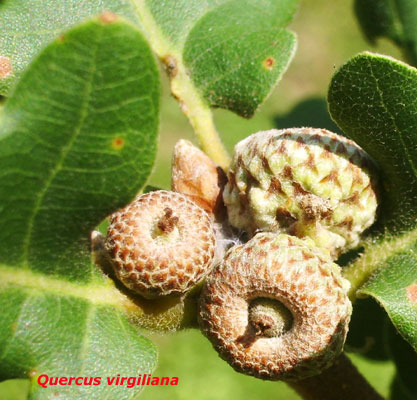| Quercus virgiliana | |
| Author | (Ten.)Ten. 1835 Fl. Napol. 5: 262 |
| Synonyms | robur var. virgiliana Ten. 1831 dalechampii Wenzig not Ten. robur var. tenorei A.DC 1864 tenorei (A.DC) Borzi 1911 virgiliana var. tenorei (A.DC) O.Schwarz 1937 amplifolia Guss. 1844 Flora siculae synopsis 2 brachyphylloides Vuk. 1880 tommasinii Kotschy 1871 confusa Simonk. in Kerner 1902 not Wooton & Standl. 1913 cupaniana Guss. 1844 lanuginosa (Lam.) Thuill. subsp virgiliana (Ten.) Jav. 1924 lanuginosa var. virgiliana (Ten.) A.Camus pubescens subsp virgiliana (Ten.) Soo 1964 |
| Local names | "chêne de Virgile" |
| Range | S Europe; E Corsica; Italy; to the Black Sea. |
| Growth habit | to 20 m tall ; |
| Leaves |
5-12 x 3-6 cm (slightly larger than Q.pubescens), broadly oboval to oblong, flat; base rounded or subcordate; 5-7 pairs of lobes often rounded, lobulate, sometimes mucronate; adaxially with solitary and fasciculate stipitate trichomes; woolly beneath, with numerous simple uniseriate trichomes, less abundant fasciculate-stipitate trichomes, some, solitary ones along midrib, and stigmas partially covered with wax; petiole 0.3-2 cm; |
| Flowers | February to April; male catkins 2-3.5 cm long; pistilate catkins pubescent, 2-6 mm long; |
| Fruits | acorn ovoid to ellipsoid, 2-3.5 cm long, 1.2-2 cm in diameter, 1 to 5 together on a short peduncle or sessile; cup halfround with flat, lanceolate, sometimes reflexed scales, fringed at rim; enclosed 1/4 to 1/2 by cup; maturing in October-November; |
|
Bark, twigs and |
bark fissured longitudinaly and horizontidunaly, forming rough plates; young twig pubescent; |
| Hardiness zone, habitat | Adaptable species, growing on siliceous or calcareous soils. |
| Miscellaneous |
-- Sub-genus Quercus, Section Quercus, Series Roburoid;
-- For some Authors, mainly Italian ones, Q. amplifolia
(diagnosis HERE)
is a true species, described like that : |
| Subspecies and varieties |
|
| Pictures |
|






